Nvidia launched the Nvidia GTX 1050 Ti on 18th October 2016. The graphics card is based on the Nvidia Pascal architecture that brings in great performance upgrades as well as energy efficiency, to the new generation graphics card.
The Nvidia GTX 1050 Ti is available between Rs. 12,000 to Rs. 13,500 in India, depending on the manufacturer and brand.
Notably, it was launched along with a slightly less powerful Nvidia GTX 1050. The GTX 1050 price starts at Rs. 10,000.
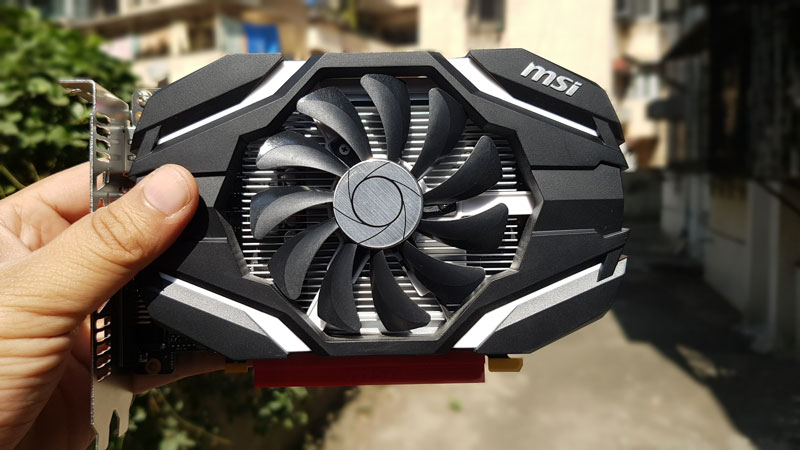
For starters, The GTX 1050 Ti replaces the most popular Nvidia card – the “GTX 750 Ti”. Moreover, the GTX 750 Ti was launched in Feb 2014, almost 3 years back. One main reason for the popularity of GTX 750 Ti is a great performance and at the same time, it works on low power, even without a power connector.
The GTX 1050 Ti also doesn’t require a power connector and could be a great option for PC gamers, who don’t want to spend extra money on upgrading that old power supply.
While the MSI GTX 1050 Ti comes with 4 GB of GDDR5 VRAM, Nvidia also has the higher-priced Nvidia GTX 1060 available with 3 GB VRAM. Going with the GTX 1060 can be a good choice if you have an extra budget, as it offers much faster gaming performance on 1080P compared to the 1050 Ti. Don’t bother much about the 1 GB lesser VRAM.
We have got the MSI Nvidia GTX 1050 Ti OC edition or more commonly called as the MSI afterburner edition for review.
Currently, the Dual Cooler versions of GTX 1050 Ti that offer better cooling are available for Rs. 12,000. These are from Asus and MSI and I can recommend you to pick these. The performance difference is negligible between these cards. You can buy the one that is available cheaper.
In this review – we will test if this graphics card is capable of gaming on 1080P and find out is it worth buying for a Gaming PC Build meant to play modern games at 1080P.
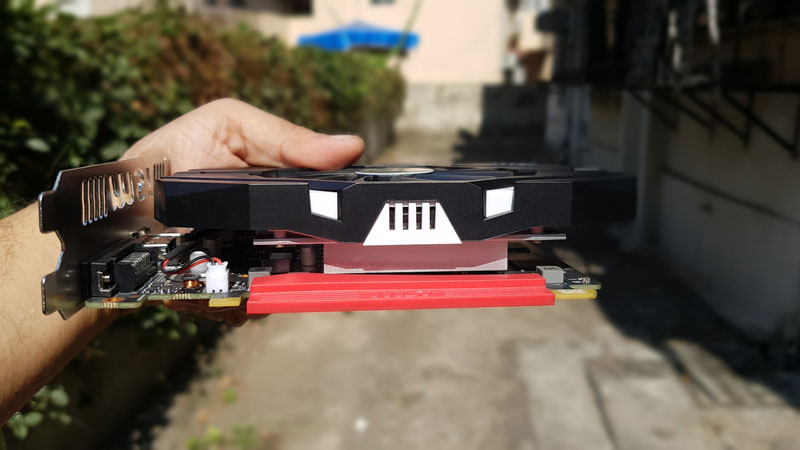
Also, we will try to do some benchmarks for Photoshop and Adobe Premier PRO video editing to understand how well the graphics card performs in comparison to some of the worthy rivals.
We earlier reviewed the Nvidia GTX 1070 Founders Edition and the Nvidia GTX 1060 Galax OC edition in detail.
Also, we will throw in some performance benchmarks in comparison to our old and faithful AMD R9 280, which is twice the size of the GTX 1050 Ti.
Can This Tiny Card beat the Monster AMD R9 280?
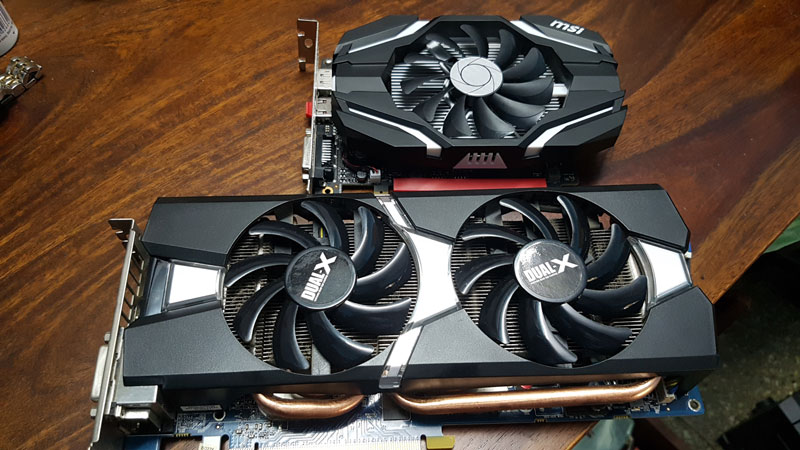
Intro, Unboxing & Design
The MSI Nvidia GTX 1050 Ti is lightweight and very small, comes with a single Fan. The PCB has a neat layout, adds to the look of the graphics card. Though the circuitry is visible at the rear side, and there is no cover backplate to hide it.
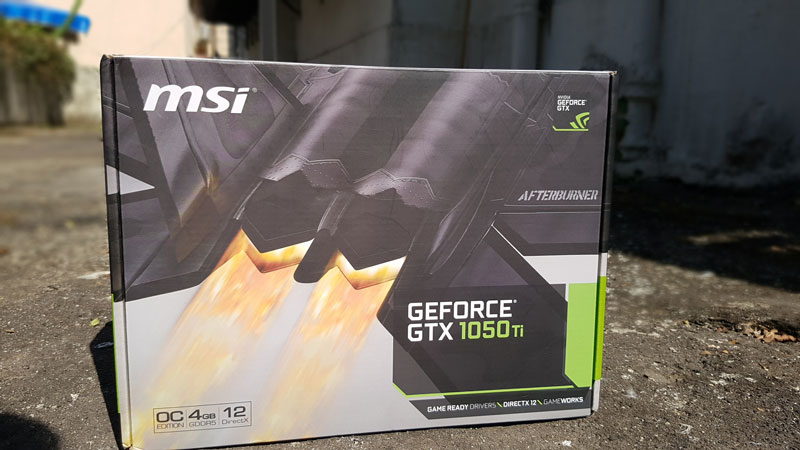
In comparison to our old AMD R9 280, it is almost half the size, and can easily fit in any cabinet. The Tiny monster from MSI has 4 GB of GDDR5 memory and doesn’t need any power connector to run.
The MSI card comes with military-grade MIL-STD-810G certified components that can withstand overclocking and high Gaming temperatures for a prolonged period of time.
The Nvidia GTX 1050 Ti comes with 3.3 Billion transistors and a small PCB board. Nvidia has shifted from the 16 Nm FinFET TSMC manufacturing process to the 14 Nm Samsung Manufacturing process for the Nvidia GTX 1050 Ti.
Un-Boxing
All tiny and powerful things come in large boxes. When you open the green box, you will be surprised to see the small wonder.
Let’s Have Close Look at the Graphics Card
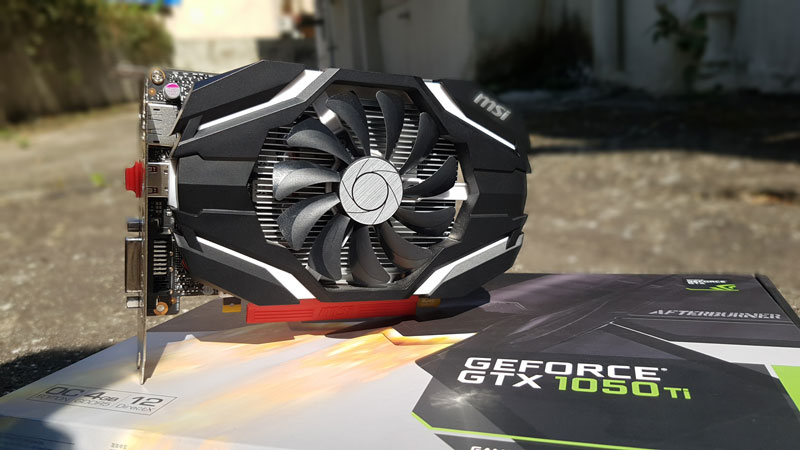
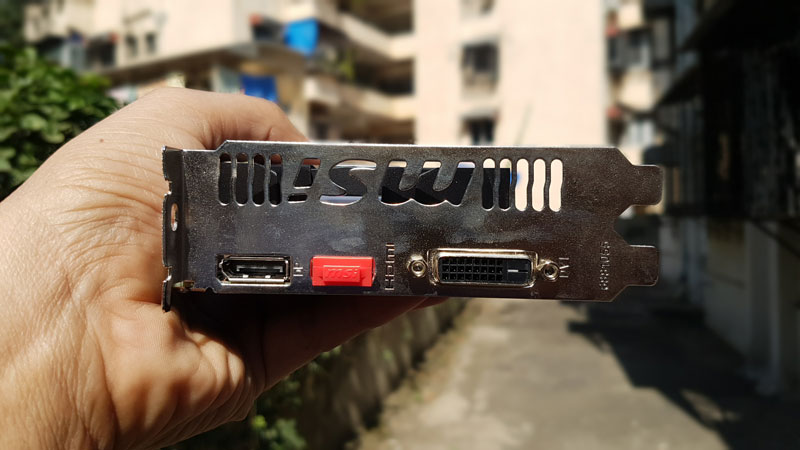
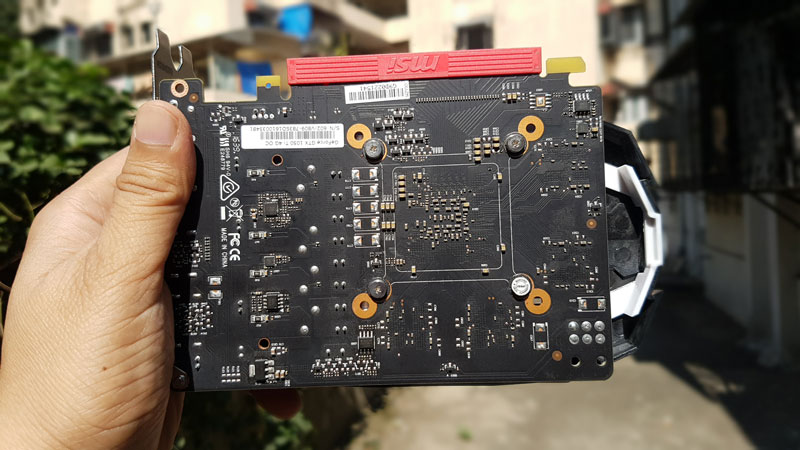
The Graphics card has a black and white casing and it goes well with my Gigabyte white color motherboard. The PCI-E slot was covered with a red plastic cover, never seen before on any card, but a good thing to do in order to protect from accidental damages.
There are DVI and HDMI ports at the back to connect to your monitor, we used the HDMI. There is a single Fan in the center which provides sufficient cooling.
The graphics card comes with the latest GP107 Nvidia Architecture and has 768 Cuda Cores along with 128 Bit memory bus width.
Key Specs For the MSI Nvidia GTX 1050 TI
- Base Clock – 1341 Mhz
- Boost Clock –
- Architecture – GP107-400
- Cuda Cores – 768 Units
- Memory Clock Speed 7008 MHz
- Memory – 4GB GDDR5
- The Memory Bus Width – (128-bit)
- Power Consumption – 75 Watts
- Recommended PSU Power – 300 Watts
- Card Dimensions – 177 x 118 x 34 mm
- Weight – 330 grams ( twice your smartphone weight)
- DX -12 Support – Yes
- G-Sync & V-Sync Support – Yes
- Maximum Displays – 3
- Ports – HDMI x 1
- Dual-link DVI-D x 1
- Price – Rs. 14,000 $ 190 (Approx)
The MSI Afterburner software is bundled on a DVD along with the drivers. It is a renowned software for OC and most easy to use for overclocking if you wish to do that to a new graphics card. Personally, I like the cards to be dead silent and on the stock, as long as they deliver exhilarating performance.
Installation – Super Easy – You simply have to insert the card in the PCI –E slot and it just works. As a next step, you will have to install the GeForce Experience software from Nvidia Website and the latest Nvidia Drivers.
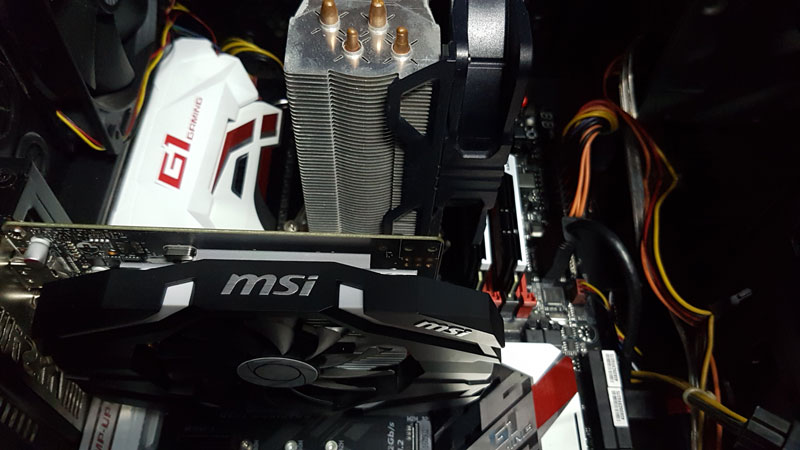
Review MSI GTX 1050 Ti OC Edition
Let’s first do a quick comparison between GTX 1050, GTX 1050 Ti, and the GTX 1060. The Nvidia GTX 1050 comes with 128 lesser Cuda Cores when compared to the GTX 1050 Ti, however if you observe the below table carefully it does have a higher clock speed.
KEY SPECS COMPARISON NVIDIA GTX 1050 TI VS GTX 1060 VS GTX 1050
| Nvidia GPU | GTX 1050 | GTX 1050 Ti | GTX 1060 3GB | GTX 1060 6GB |
| CUDA Cores | 640 | 768 | 1152 | 1280 |
| Boost Clock | 1460 Mhz | 1390 MHz | 1700 MHz | 1700 MHz |
| Memory Interface | 128-bit | 128-bit | 192-bit | 192-bit |
| VRAM Size | 2GB GDDR5 | 4GB GDDR5 | 3GB GDDR5 | 6GB GDDR5 |
| Memory Clock | 3.5GHz | 3.5GHz | 8GHz | 8GHz |
| TDP | 75W | 75W | 120W | 120W |
| Process | 14 Nm | 14 Nm | 16 Nm | 16 Nm |
| Price | Rs. 10,000 | Rs. 12,500 | Rs. 17,000 | Rs. 23,000 |
Next, Let’s first check our test system Specs, we have some of the latest shiny hardware to pair with the GTX 1050 Ti.
Keys System Specs Used for Benchmarks
- Intel Core i7 Skylake 6th Gen 6700 K Clocked @ 4.2 GHz.
- 16 GB G.Skill 3200 MHz DDR4 RAM.
- Cooler Master Hyper 212 X Processor Cooler.
- Gigabyte Z170 Gaming X Series 7 Motherboard
- Samsung Evo SSD 256 GB and 2 TB HDD Seagate.
- Haf 912 Cabinet.
- Dell FHD Monitor 1080P
- Cooler master 650 Watts Bronze PSU.
- GPU – MSI Nvidia GTX 1050 Ti OC Edition.
The GTX 1050 Ti will work easily with the Intel Core i3 or higher. If you have the AMD 6300 or higher processor you will not face any bottleneck issues.
For this review we are using Intel Core i7 6700K clocked at 4.2 GHz and the latest DDR4 Ram clocked at 3200 MHz in Dual Channel configuration. Your gaming and benchmark results may vary a little, based on the configuration you are using.
Let’s begin our testing and see if the MSI Nvidia GTX 1050 Ti can do 60 FPS in most of the gaming titles at 1080P.
Gaming Benchmarks Nvidia GTX 1050 Ti
Crysis 3 – My personal favorite to torture new graphics cards. Crysis 3 has been one of the most punishing games of all time and it was easily playable at very high settings on 1080P. Nvidia GTX 1050 Ti scored an average of 43 FPS which is significantly higher compared to 36 from R9 280. The Nvidia GTX 1060, on the other hand, manages 60 FPS in this game.
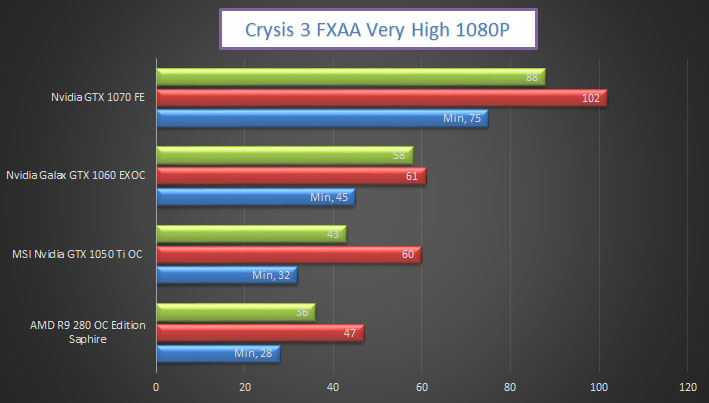
Battlefield 3 – If you are interested in Shooting games the BF3 and BF4 are excellent games. In BF3 the Nvidia GTX 1050 Ti performed superbly, easily hitting over 150 FPS on an average and much faster than the R9 280.
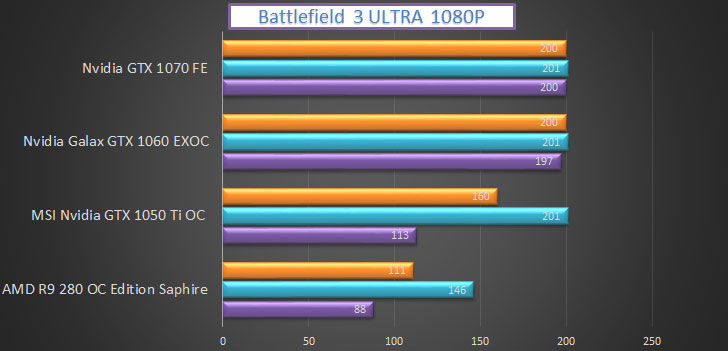
Battlefield 4 – It is slightly more demanding than Battlefield 3 but the MSI GTX 1050 Ti easily managed to run over 100 FPS on an average.
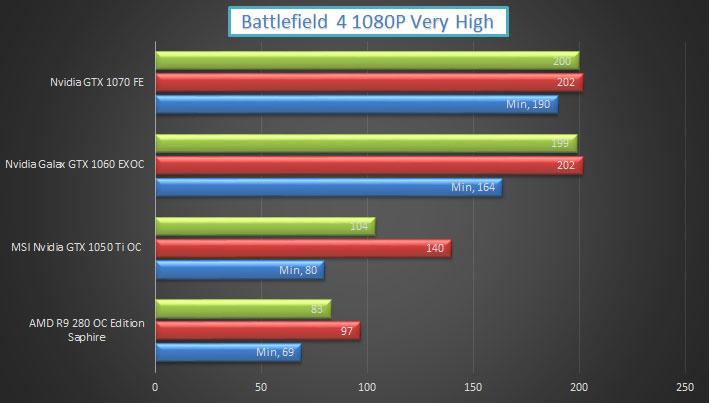
FarCry 4 – It is another highly graphics-intensive title and our GTX 1050 Ti sailed over 60 FPS easily in this game too.
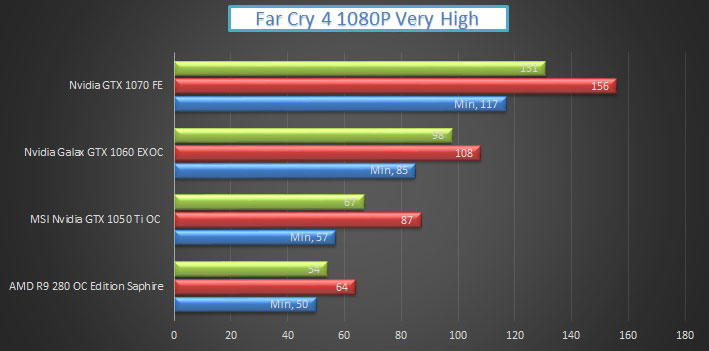
Fallout 4 – Fallout 4 is one of the most popular titles of 2016 and the GTX 1050 Ti performed to my expectations here, Avg FPS was close to 64 in this title.
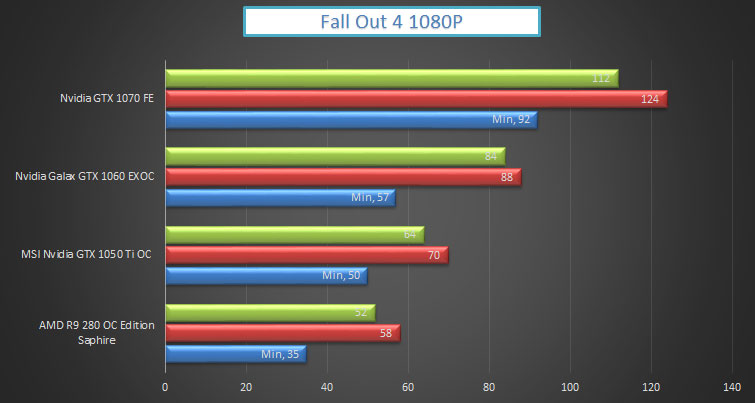
GTA V – GTA V was no exception and we were able to do over 50 FPS in the game with the Nvidia GTX 1050 Ti.
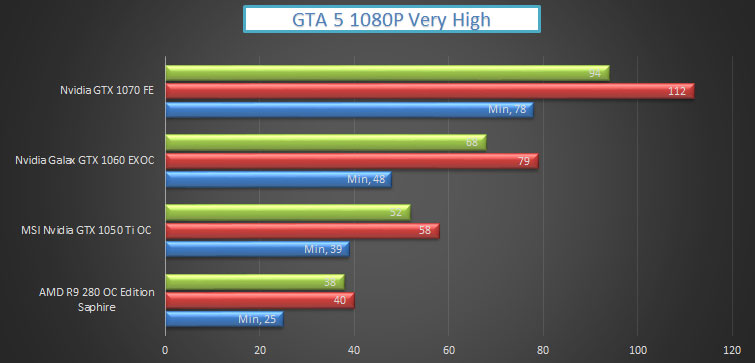
Witcher 3 – Last Game on the list is Witcher 3, The Nvidia GTX 1050 Ti closed the Gap between the GTX 1060 in this title with Avg 43 FPS on very High Settings.
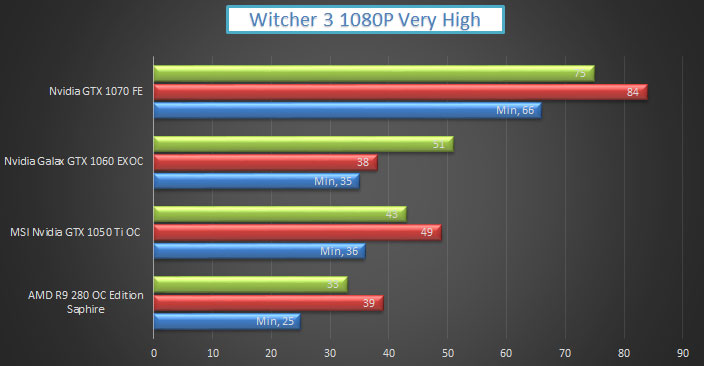
Next is the lone benchmark Performance – Furmark, a punishing benchmark for GPU performance. It measures FPS and provides an overall score for graphics performance. Furmark Score was impressive for the 1050 Ti which is about 20% higher compared to the R9 280.
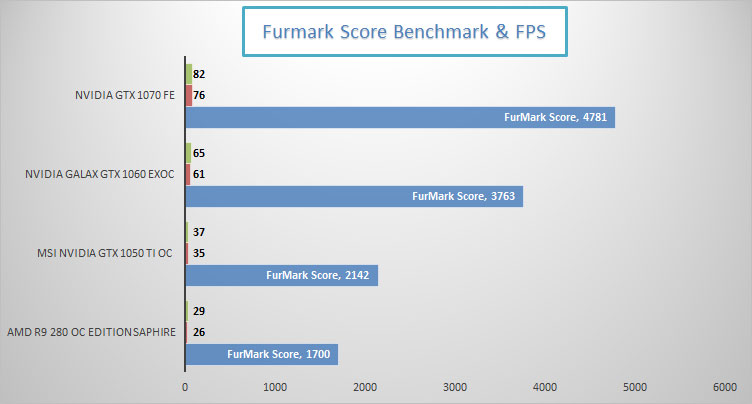
Adobe Photoshop and Premiere Pro Performance
The Adobe Photoshop performance for the Nvidia GTX 1050 Ti was a bit of zinger. It managed to render the same image in 2.1 seconds, almost equally fast as our GTX 1070 FE. I am not sure what helped it, was it the 14 Nm process it was the lucky day for the Ti, it outpaced even 1060 in this benchmark.
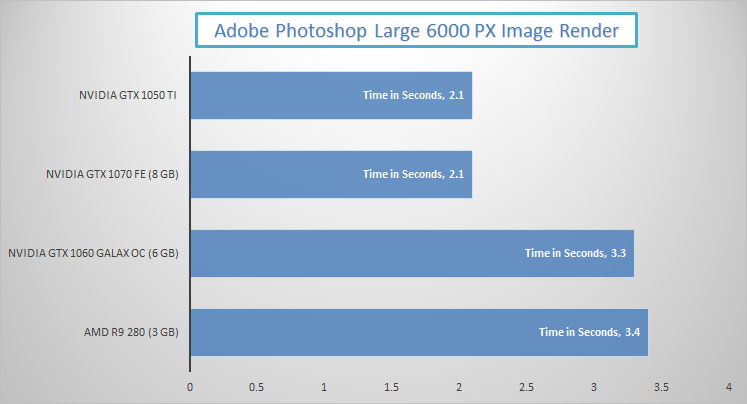
Adobe Premiere Pro Video Editing Test – Nvidia GTX 1050 Ti
While I was super pleased with the Adobe Photoshop performance, the 1050 Ti is not a slouch when it comes to video editing either. While editing a 1080P video it took 157 seconds that is just 3 seconds more when compared to the GTX 1060. The only test where our old AMD R9 280 managed to push ahead by 2 seconds.
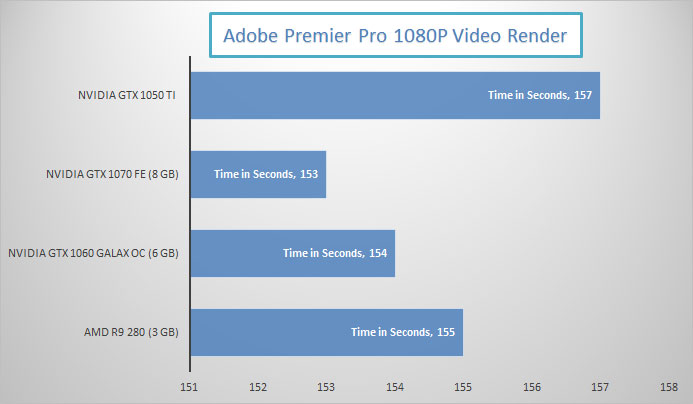
Temperature And Noise
The MSI Nvidia GTX 1050 Ti is a cool customer. This is one thing that I really liked about this card and even after pushing it in most of the graphics intensive games it stayed below 67 degrees Celcius.
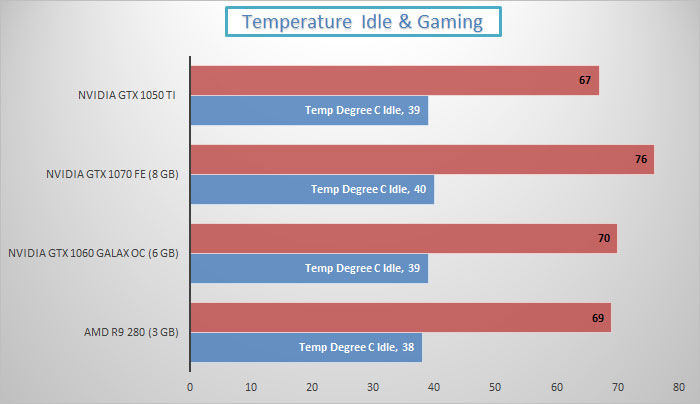
The single fan is near silent in most of the games and kicked in only when things got a little heated up. Overall, a quiet and cool experience, a much-needed thing in Delhi summers. I have seen some of the cards touching 90 degrees Celcius, in the past. One of the Zotac Mini GTX 970 reached those levels. But not the 1050 Ti.
Also, MSI 1050 Ti comes with a 6-pin connector variant called MSI Gaming 4G GTX 1050 Ti, which offers more room for overclocking and heat dissipation.
Concluding Thoughts – IS the GTX 1050 Ti Good for 1080P Gaming?
A lot has changed in the last three years in the graphics card world. The new Nvidia Pascal architecture-based cards push the limits for performance while using less energy. The small form factor, silent operation, and game-ready drivers all contribute to the gaming experience on PC. The performance jumps are significant to make the older cards look pale.
In conclusion, the Nvidia GTX 1050 Ti is a solid graphics card for 1080P gaming, pair it with a Core i3 or AMD FX 6300 or higher and you are set to rule the latest titles. It is an excellent upgrade for those who don’t want to buy a new power supply or spend too much money on buying everything new in the rig.
The Nvidia GTX 1050 Ti is small enough to fit in any case, and also offers incredibly high power efficiency. It would easily work with your old PSU, provided it is quality equipment with 300 Watts Plus capacity.
Upgrade
If you have an old AMD R9 270 or 7850 or 7770 or something similar, the GTX 1050 Ti can boost your gaming experience significantly. On the other hand, if you are still using a GTX 650 or 650 Ti or even a GTX 750 Ti, the new 1050 Ti is an ideal upgrade. Roughly, you can gain between 30% to 80% in different gaming titles.
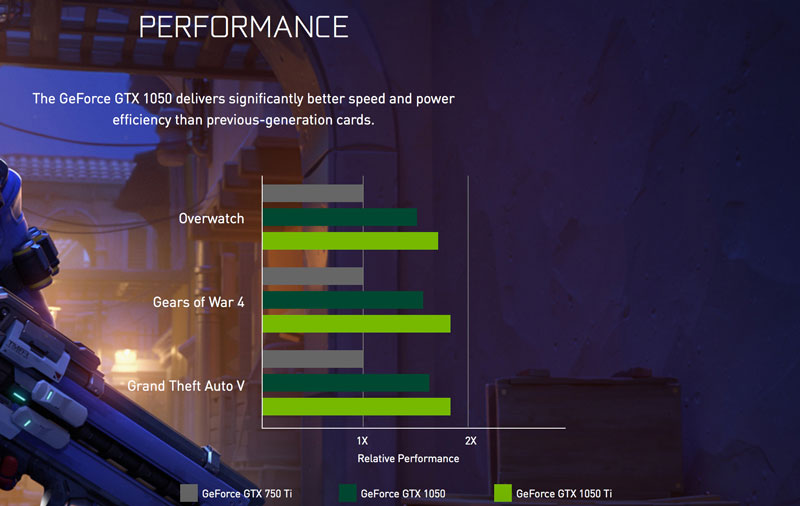
Competition
Even in comparison to the AMD RX 460, the Nvidia GTX 1050 ti offers at least 15 to 20% gain in different gaming titles. While the AMD RX 470 is a significantly faster graphics card and competes with the Nvidia GTX 1060 (3 GB VRAM) at an almost similar price.
Portable Compact PC
Gone are the days when you needed a very large gaming cabinet or a very large size GPU to showcase the great gaming performance to your friends. Moreover, this tiny GTX 1050 Ti can be packed in smaller a case and can offer ultimate performance with minimal heat and noise.
1080P or 720P Gaming Rig
It easily beats our old faithful AMD R9 280 and in most titles manages to stay above 60 FPS @ 1080P resolution. Even cranking the graphics to High and Very High settings doesn’t make it break a sweat. On a 720P monitor, you may be able to push everything to ultra and even then you may easily hit the 60 FPS mark.
The MSI GTX 1050 Ti is an impressive offering as far as performance goes; added advantage is it takes low space and uses even lower power.
Is it Good for 1080P Gaming – Hell Yes.
Check Official Website – MSI Geforce GTX 1050 Ti. If you need some help with building an ultimate PC, here are some guides you need to read.


